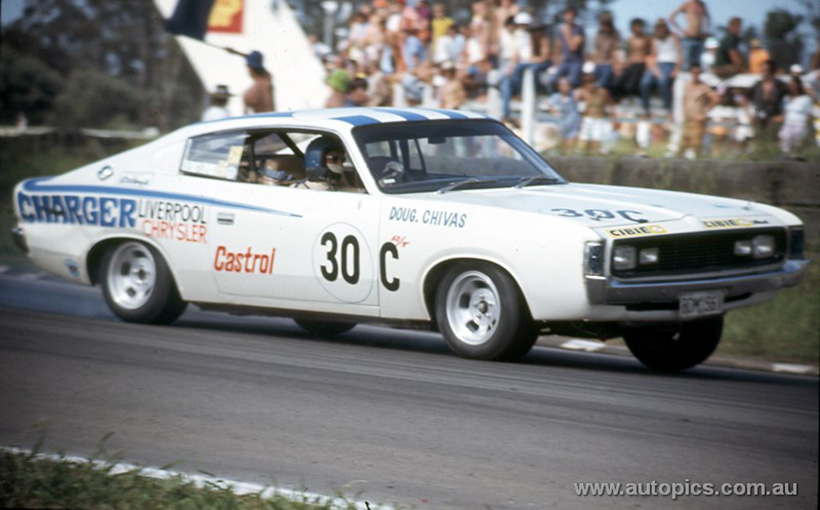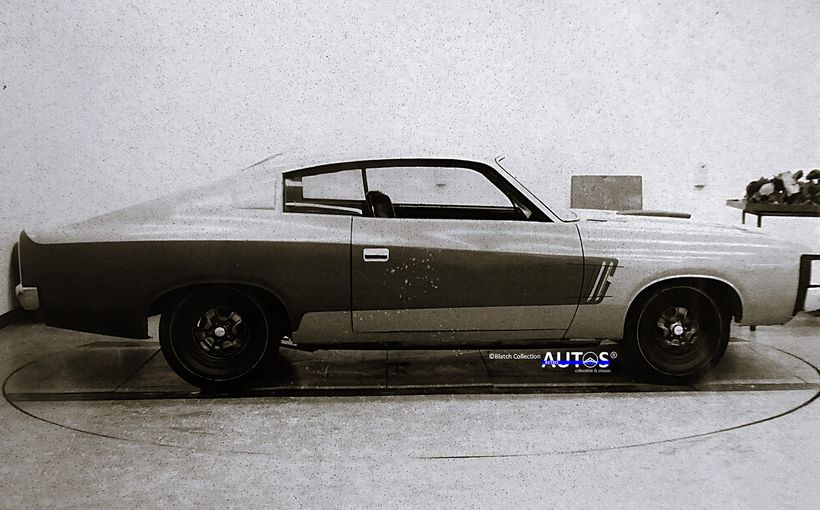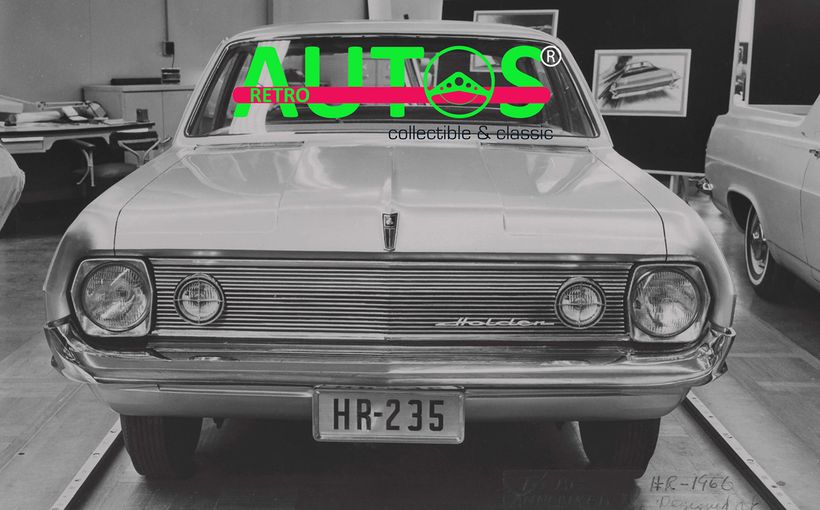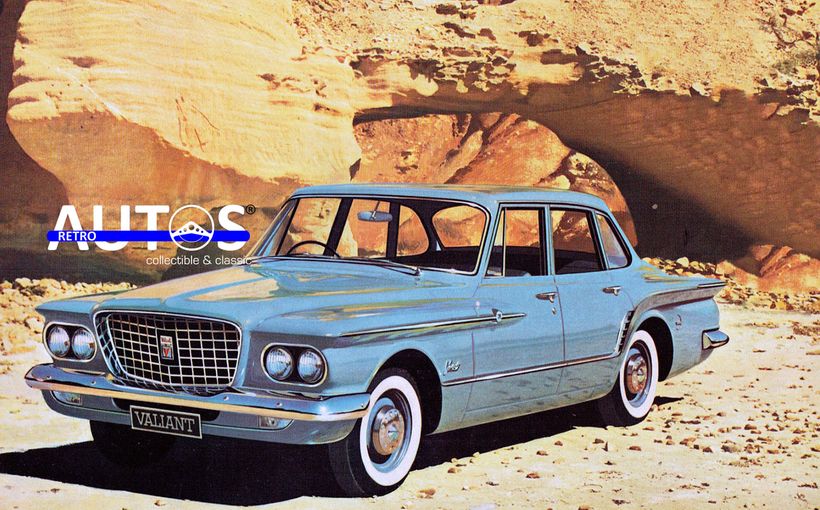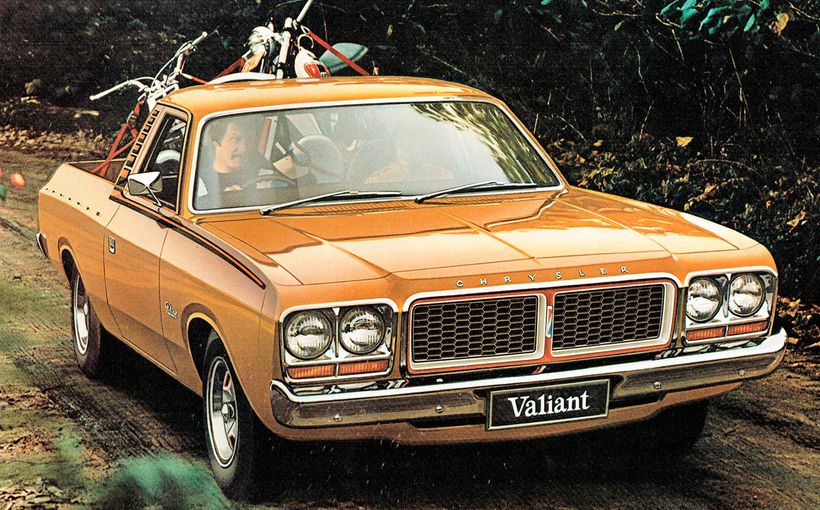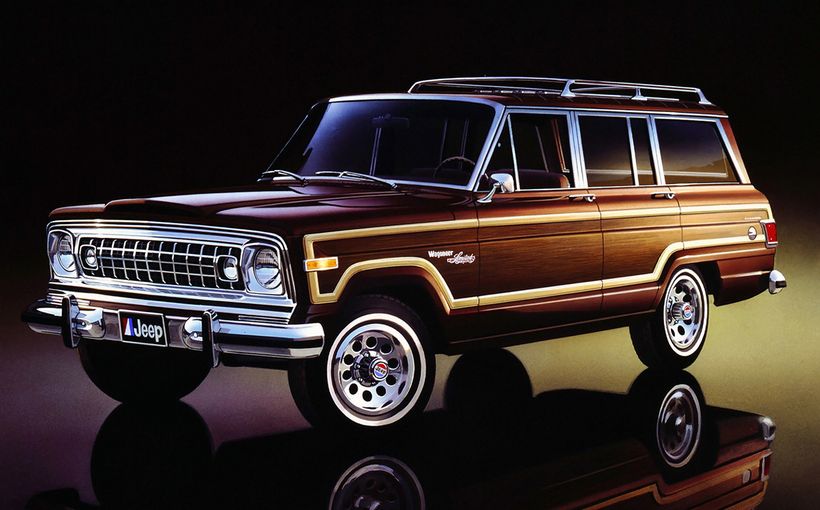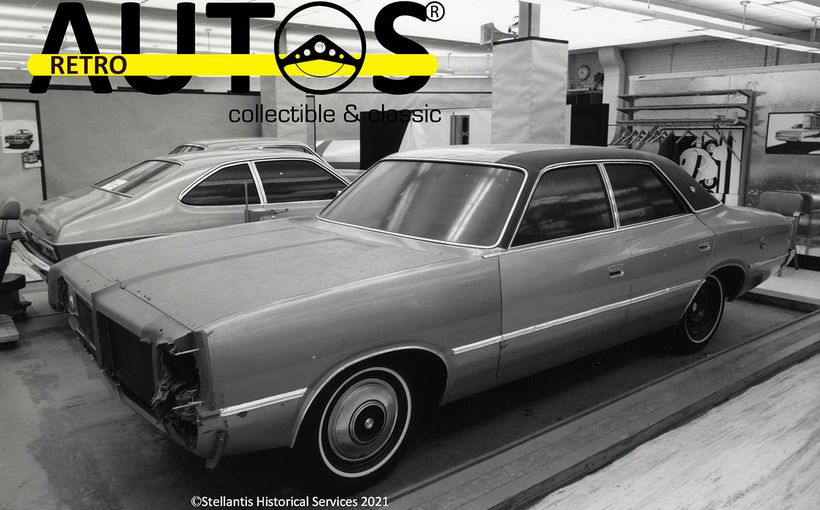VH Valiant: The R/T ‘Super Charger’ that never made it

Former Chrysler Australia competitions manager John Ellis is adamant that the R/T Charger E49 Hemi Six Pack, which on release in August 1972 was the fastest accelerating production car in Australia, was the end result of a long wish-list which could only be partly implemented.
Chrysler’s fastest series production race car had even greater potential just waiting to be tapped when the politically motivated and media driven ‘Supercar Scare’ of 1972 brought a sudden and brutal end to the showroom-based Bathurst muscle car wars.
Ford cancelled its XA Falcon GT-HO Phase IV and Holden axed its LJ Torana XU-1 V8 when both were poised for production. A minimum of 200 road registered examples of each were required to be eligible to race at Bathurst that year.
Chrysler had already commenced production of its definitive high performance Charger, the R/T E49 Hemi Six Pack, when the crisis erupted. It prompted immediate cancellation of the R/T program and any direct factory involvement in motor racing, under new American boss William Ballthrop.
“It was a frustrating time because the E49 had only just been released and had so much development left in it when the racing program was axed,” Ellis told Shannons Club.
“When you look at how well the E49s went at Bathurst that year (third and fourth outright) with no factory support, it makes you realise how strong that package was and how much potential there was had we been able to continue our development.”

Other jobs on the Hemi wish-list were stretching the tough triple-carbed inline six from 265cid (4.3 litres) to as large as 300 cid (4.9 litres), tied to camshaft development with even more aggressive profiles than the E49 specification.
Ellis also wanted better engine bay ventilation by fitting vents into the mudguards behind the front wheels, or into the bonnet, or both. This was to reduce the power-robbing effects of heat-soak from six red hot extractors sitting directly beneath the Hemi Six Pack’s triple Weber carbs.
Another item on the wish-list was a new fuel tank design to replace the 35-gallon (159-litre) long range ‘Bathurst’ tank, which in the E49 was mounted entirely above the boot floor hard against the rear seat bulkhead.
When full this weighed about 130 kgs, raising the car’s centre of gravity with a negative effect on handling. Ideally the new tank would have been similar to the Falcon (36-gallon) and Torana (17-gallon) competition, which carried their Bathurst fuel loads at and below boot floor level.
Ellis also wanted much stiffer six-leaf rear spring packs to help counter the effects of excessive body roll and lateral axle movement under hard cornering. Also under consideration was a GT-HO-style plastic front spoiler to counter what Ellis described as excessive aerodynamic lift at the front. Brake improvements were also high on the priority list along with weight reductions.
An R/T E49 equipped with all of these upgrades would have been a formidable competitor and potential Bathurst winner. However, time and funding limitations were always running against the R/T Charger program. Ellis and the car’s development team did the best they could with the E49 before the axe fell on the whole program.

The fact that Ellis could not get any of these features included in the R/T E49 should put to rest fanciful theories that Chrysler was secretly well advanced with plans to build a new R/T Bathurst challenger for 1972 powered by Chrysler’s potent 340 cid (5.6 litre) small block V8.
There’s no denying that Chrysler had toyed with the idea of slotting a hot 340 V8 into a VF or VG sedan or hardtop in the late 1960s, to allow one of the Geoghegan brothers to run amok with the Mustangs in the Improved Production era.
And there’s also no doubt that factions within Chrysler Australia and many dealer-backed race teams were pushing hard for an R/T V8 Charger to be built at the time, no matter what the obstacles, to provide the best chance of a Bathurst win.
However, the cold, hard facts are that for a number of compelling reasons - namely prohibitive development costs and fundamental design issues – the R/T V8 could never have become a production reality.
The mighty 340 in its original steel-cranked, high compression, big-valve specification from 1968-1971 was one of the toughest small block V8s ever to come out of Detroit. In its ultimate Trans-Am or T/A spec in 1970, it was topped with three two-barrel Holley carbs on a trick Edelbrock inlet manifold also known as the Six Pack. This engine was more than capable of producing GT-HO Phase III grunt.
However, by 1972 the 340 had been reduced to a mere shadow of its former self due to ever-tightening US emissions laws and unleaded fuel requirements, with a cast crank, small-valve heads and low compression internals. The opportunity for it to serve as a race-ready ‘crate’ motor import for 200 hot R/T Chargers was long gone by 1972.

The increased power and torque of a hot 340 was also considered too much for the local Borg Warner gearboxes being used behind the Hemi sixes. The much larger and heavier New Process 833 four-speed muscle car gearbox from the US would be required, which made the 340 V8 even less appealing on weight issues let alone floor modifications required to install it and the punitive costs of importing such items.
And even before those commercial factors required any serious consideration by Chrysler’s top brass, early race track testing provided all the proof John Ellis needed that a 340 cid V8 in a Charger would be inferior to the Hemi Six Pack.
From the outset, Chrysler’s US engineers were adamant that the weight and power of a 340 V8 in the Charger was too much engine for its relatively short 105-inch (2667mm) wheelbase to succeed as a race car. They were adamant that the increased weight of the V8 (35 kgs heavier than the Hemi six) would make it too nose-heavy and induce more understeer.
In the early days of the Charger’s competition development program at Adelaide’s Mallala Raceway, Ellis put those theories to the test when he famously trialled a 340 V8 in a development mule.
This was based on one of two cut-and-shut VF/VG Valiant utes that shared the Charger’s wheelbase, track dimensions and fuel tank location to compare the V8’s performance against that of the Hemi six version. It was also equipped with the heavy-duty 833 gearbox, which had required major re-working of the transmission tunnel to make it fit.
The results confirmed the theories. The 5.6 litre V8 mule was an absolute missile in a straight line, as you would expect. However, on the stop watch it was not only several seconds slower per lap than the Hemi Six Pack-equipped version, but it also didn’t handled as well, wore out its brakes and tyres faster and used a lot more fuel.

The Series Production era (1971-72)
‘Win on Sunday, sell on Monday’ really meant something back in the early 1970s, when the bare-knuckled bout for Bathurst bragging rights between Ford, General Motors-Holden and Chrysler was in full swing.
The halo effect of an outright victory in the annual Hardie-Ferodo 500 race at Mount Panorama, for showroom standard ‘Series Production’ road cars, delivered such a boost in brand image and showroom foot traffic that it was a prize worth fighting hard for.
Charger R/T E38 Hemi Six Pack
No one was left in any doubt about how serious Chrysler was about trying to knock off Ford and Holden on the race track when it launched the hot R/T variant of the Charger in August 1971.
With its choice of bright exterior colours, overt black-out paint treatments, quartz halogen driving lights, special instrument panel etc, the R/T name (Road/Track) alerted enthusiasts to its split personality.
It was what was under the bonnet that really got pulses racing. A bored-out version of Chrysler’s 245 cid ‘Hemi’ in-line six boosted the R/T’s capacity to 265 cid (4.3 litres) which in base R/T specification with a two-barrel carburettor was rated at 218 bhp (162 kW).
Next step up was a hotter R/T variant with factory option code E37. This was in effect a milder ‘street’ version of the full-house E38 competition car, equipped with a trio of 45mm DCOE Weber twin-choke carburettors (hence Six Pack) mounted on a unique cast-aluminium inlet manifold. This had been created with the assistance of Weber engineers in Bologna, Italy using a VG Pacer sedan as a test mule.

This was a stunning development. No major Australian car maker had ever adopted such an elaborate and exotic carburettor and inlet system and it certainly had the go to match the show, with the E37 option boosting the 265 Hemi’s power output to 248 bhp (185 kW).
Top rung of the R/T performance ladder was the R/T E38, which didn’t try to disguise its Bathurst intentions. The triple-Weber E38 version of the Hemi Six Pack was designed and built by the factory as a ready-made race engine, with a hotter camshaft and numerous upgrades of internal and external hardware to improve performance and durability in competition use.
The E38 was rated at 280 bhp (209 kW) at 5000 rpm with a 318 ft/lbs (429 Nm) of Mountain-climbing torque at 3700 rpm. And like its Pacer predecessor the R/T E38 could be upgraded to full Bathurst racing specs with another factory option exclusive to the E38.
The A84 Track Pack included a more direct 16:1 ratio steering box, Sure-grip LSD rear axle assembly with a choice of 3.23:1 or shorter 3.50:1 diff ratios, lightweight 14 x 7-inch cast-alloy ROH wheels, revised brake package that included finned rear drums and thicker front rotors and adjustable front mounting points for the rear leaf springs to aid suspension tuning.
Proof of the A84 Track Pack’s Bathurst intentions was also the inclusion of a huge 35-gallon (159-litre) fuel tank with twin fillers, mentioned earlier. This left barely enough room for the spare tyre and effectively rendered the boot area off limits for carrying anything as superfluous as personal luggage.
If Bathurst wins were awarded on the basis of sheer commitment alone, the Charger R/T E38 in full A84 Track Pack specification would have cleaned house. Given Chrysler Australia’s funding restrictions and component supply challenges, what the Adelaide-based company achieved in creating this Bathurst warrior was nothing short of astonishing.

There had been crucial compromises though. Like its hot VG Hemi Pacer predecessor, the R/T E38 Charger had a three-speed gearbox, demanded by Chrysler Australia’s commitment to producing cars with almost 100 per cent local content. As there was no Australian-made four-speed gearbox available at the time, Chrysler’s only option was Borg Warner’s three-speed unit.
This was not a major handicap at Bathurst and in other long distance races, because apart from leaving the start line, Falcon and Torana drivers with their four-speed gearboxes never used first gear.
The much taller first gear in the close-ratio R/T three-speed was designed to sit about midway between first and second in a four-speed gearbox. This would prove to be a real handicap against the GT-HOs and XU-1s in short sprint races, where Charger drivers would struggle to get off the start line quickly.
And although the Charger’s chunky and handsome proportions certainly looked the goods, they also created chassis dynamics that often proved to be less than ideal in competition.
The Charger was built on a relatively short 105-inch (2670mm) wheelbase, which magnified the ‘see-saw’ effect of dynamic weight transfer from front to rear, resulting in excessive squat under acceleration and forward pitch under heavy braking.
This was not helped by the high location of the big long range fuel tank fitted to the Bathurst cars.

The VH Valiant’s bulbous bodywork also ended up being more than 100mm wider than that of the VF/VG ute-based development mules, which added to the R/T’s lateral inertia and tendency to understeer in hard cornering.
The Charger’s wheelbase was also quite short relative to its track width. Cars with this wheelbase-to-track ratio are very responsive to directional change, but tend to be more twitchy or ‘nervous’ at high speeds.
To put that in perspective, the Charger shared similar track dimensions to that of the XY Falcon GT-HO but its 105-inch wheelbase was a full six inches (150mm) shorter than the Ford.
While this made it a less stable platform on high speed tracks like Mount Panorama, it proved to be better suited to shorter, tighter tracks. This was certainly evident in New Zealand at the time, where R/T Chargers were dominant in Kiwi series production racing.
The racing performance of the R/T E38 Chargers was also compromised by the non-power assisted 11-inch ventilated front disc brakes and callipers, which were considered marginal for competition use given the greater power and speed of these cars.
Ford faced similar brake challenges with its even faster 5.8 litre V8 GT-HO Phase III in the lead-up to Bathurst in 1971. It was only late development of a new high temperature, hard wearing DP11-1103 pad compound for the Phase IIIs by race sponsor Hardie-Ferodo that allowed Allan Moffat to win the 500 in record time and at record speeds without needing a pad change.

Racing great Leo Geoghegan, who played a huge role in the development of the R/T Chargers, is adamant that the Chargers could have beaten the Toranas in their six cylinder class battle and applied greater pressure to the GT-HOs if Chrysler Australia had been able to sort out its front brakes for Bathurst.
Geoghegan recalled an R/T test session at Mallala Raceway, which is notoriously hard on brakes. When Chrysler engineers fitted a temperature sensor to the front brakes, the coolest reading was 800 degrees (F) with peaks rising as high as 1300 degrees (F)!
Despite endless experiments with rotors, pads and cooling, Geoghegan said at full race speed they would wear out a set of front brakes pads after 40 laps, which was only about 60 miles (100 kms).
Geoghegan said that a major weakness was in the rigidity of the callipers, which flexed so badly that the pads wore down to a taper on one edge. The calliper flexing also caused a fair degree of pad knock-off, which required the driver to pump the brake pedal to keep the pads up to the rotor face.
There were unrealistic media expectations of an outright Bathurst win for the new Chargers, following a debut victory for the R/T E38 at Oran Park’s 100-lap Toby Lee mini-enduro two weeks prior to the 1971 Hardie-Ferodo 500.
Doug Chivas in a works-entered E38 drove a masterful race to pass Colin Bond’s HDT Torana XU-1 with less than a lap to go, but the win flattered to deceive. Bond had only been forced to relinquish the lead to Chivas due to faulty gear selectors, after starting off the back of the grid and passing the entire field!
And the Chargers were so new and late in arriving that the factory team had not had time to run crucial Bathurst simulations to determine brake and tyre wear, given the much greater speeds of the Chargers compared to the previous Hemi Pacers. Nor fuel consumption tests, on a track which required wide-open throttle to be used for more than 60 percent of each lap.

The works Phase IIIs were also absent from Oran Park, after a troubled debut at the Sandown 250 the previous weekend in which the two factory cars and private entries had suffered a variety of mechanical and brake problems.
However, the Fords regrouped in time for Bathurst with works driver Allan Moffat unleashing the awesome might of the new Phase III by setting a pole position time that was more than 13 seconds under the previous lap record.
On Conrod Straight the works Fords were being clocked at 150 mph (240 km/h) compared to the fastest Chargers at around 135 mph (216 km/h). The big Fords were just faster everywhere.
Works driver Leo Geoghegan qualified top of the 10 R/T E38s entered and also toppled the Toranas to be quickest in Class D (cars costing $3151- $4350). Even so, his eighth grid position was behind seven of the new GT-HOs - and his qualifying time was almost six seconds slower than Moffat’s!
The Ford ace proved untouchable in the race, too, blitzing the competition to win by a lap in a display of arrogant dominance. Geoghegan was also the highest placed Charger in the race, finishing second in class to Colin Bond’s HDT XU-1 and seventh outright.
The Chargers performed very well under the circumstances, with only two of the 10 starters retiring from the race. What proved decisive was the E38’s alarming appetite for tyres and fuel that far exceeded Chrysler's expectations, plus the need to ‘baby’ the front brakes to ensure the cars could get through without needing a pad change.
Leo Geoghegan said that he was having to get off the throttle approaching the second hump on Conrod Straight each lap to start slowing the car for Murray’s Corner, as stopping at the end of Conrod Straight was where most of the wear occurred. That alone cost vital seconds per lap and ensured the R/T E38s werer performing below their potential.
Even so, the late Howard Marsden, who in 1971 was Ford's competitions manager and played a key role in sorting the Phase III's brake problems before Bathurst, said the Charger really should have won the 1971 Bathurst 500.
"If you compare the 1971 times against the previous year's, you'll find that the Chrysler boys actually took six laps out of the 1970 times," he told Street Machine magazine in 1997.
"So to have come from nowhere and to have very little experience prior to that 1971 race and be able to take six laps out, they deserved to win. They've always had my admiration; I still believe they really should have won the 1971 event."
Marsden, always the English gentleman, did not mention that the new GT-HOs took SEVEN laps out of their 1970 race times, which allowed Allan Moffat to win by a lap.

Charger R/T E49 Hemi Six Pack
The second and final competition version of the R/T Charger was the E49 released in June 1972. Like its E37/E38 predecessors, it was available in a milder E48 ‘street’ version.
The R/T E49 was a sensation. It was the most powerful production six cylinder car of its time which straight off the showroom floor could do a 14.5 second standing quarter. That also made it the fastest accelerating car produced by the big three.
The E49 was the definitive version of the breed, with a more powerful big-cam version of the Hemi Six Pack rated at 302 bhp (225 kW) at 5600 rpm.
And a long awaited Borg Warner ‘single rail’ four-speed gearbox that finally gave frustrated Charger racers the low first gear they had always wanted, with a prominent number ‘4’ displayed on the body’s vertical stripe to prove it. The new camshaft profile was tailored to take best advantage of the extra cog, with the power increase resulting in a drop in torque from the E38's 318 ft/lbs to 237 ft/lbs (320Nm) at 4100 rpm.
Unfortunately, the ultimate R/T Charger (like the E38) went to Bathurst short on development as a result of the supercar furore.
Six R/T E49 Chargers were entered for the 1972 Hardie-Ferodo 500, led by Leo Geoghegan’s dealer-backed car which like the previous year was the fastest Charger in qualifying, finishing up sixth on the grid behind five XY Falcon GT-HOs and Peter Brock’s HDT LJ Torana XU-1 with the larger 202 cid engine. Moffat was again on pole, but this time the fastest Charger was only 3.3 seconds adrift – another huge performance gain.

Geoghegan showed impressive speed early on and actually led the race for a few laps, but time lost during pit stops due to a faulty starter motor, a loose battery lead and a misfire at high revs that developed late in the race cost him any chance of victory. He drove the entire distance solo and finished fourth outright.
After the race, the starter motor problem was traced to something as simple as a solenoid wire that had come adrift. However, because the car had to be push-started, it incurred a 60-second time penalty each time it left the pits.
The top-end misfire was traced to a broken inner valve spring, which Geoghegan claimed was the only mechanical failure he had racing a Charger, which was perhaps indicative of Chrysler’s withdrawal of factory support at the time. The E49 deserved better.
The best performing Charger at Bathurst in 1972 was the Doug Chivas/Damon Beck E49 which finished one place ahead of Geoghegan in third place, behind John French’s dealer-entered XY Falcon GT-HO Phase III and Peter Brock’s winning HDT Torana XU-1.
Backed by an enthusiastic group of regional Chrysler dealers, the car was owned by Beck but race-prepared by Chivas at his Sydney workshop. Particular attention was paid to fine tuning of the Weber carburettors, as they planned an economy run that required only one stop for fuel as opposed to the usual two. It was hoped the huge time saved would prove a winning strategy.
Although car owner Beck did enough laps during practice to qualify for the race as a back-up driver, the plan was that Chivas (like Geoghegan) would drive the full 500 miles solo and allow Beck to concentrate on team management in the pits.

On a soaking wet track, Chivas elected to start the race on intermediate tyres as conditions were forecast to improve. From ninth on the grid, he took it easy in the early laps but as the track started to dry he climbed as high as second and made it to lap 66 and just past half-race distance before the engine started to splutter.
Chivas had driven brilliantly to reach their fuel range target but when he pitted for the team’s one and only scheduled stop for fuel and a switch to dry weather tyres it all went wrong - the result of a fateful decision by Chivas and his crew to use new (cold) wheel nuts.
Their thinking was that the very hot wheel nuts coming off the car would be difficult to re-fit with bare fingers and that wearing gloves would be too clumsy. However, they had not foreseen that the new cold wheel nuts could jam on the hot wheel studs (metal expands when hot) and therefore had not reamed the threads which would have allowed them to spin on freely.
Compounded by the use of manual wheel braces, the pit stop which had been practised in under 2 min 30 sec in the workshop exceeded six minutes on the day!
The new wheels and dry weather tyres were eventually fitted so that Chivas could complete the race, but the time lost in the bungled stop could never be recovered. Even so, third place was a gallant effort. It was the best result a Charger achieved at Bathurst.

The Production Touring – Group C era (1973)
The introduction of new Group C touring car rules in 1973 was a period of great change in Australian tin-top racing.
Group C in effect combined the previous ‘Improved Production’ and ‘Series Production’ categories into a new class called ‘Production Touring’ (aka Group C) which allowed for limited modifications to be made to standard road cars by race teams to improve their performance for competition use.
These cars would compete for both the Australian Touring Car Championship (ATCC) and Manufacturers Championship (or ManChamps) including the Bathurst 1000.
Chrysler’s withdrawal of direct factory support of motor racing in 1972 meant Chargers became thin on the ground in 1973, with few private teams prepared to persevere with the R/T E49 Hemi Six Pack abandoned by its creator.

Pete Geoghegan’s Grace Bros Racing Team R/T E49
Despite the factory’s withdrawal in 1972, enthusiasm for motor racing remained high within Chrysler’s dealer network which was the catalyst for touring car great Pete Geoghegan to get behind the wheel of an R/T E49 for the 1973 ATCC.
Backed by a group of NSW and Victorian Chrysler dealers, what started life as a silver R/T E49 was repainted in the distinctive yellow and green colours of the Grace Bros Racing Team.
At the time Grace Bros was a thriving NSW department store chain (eventually taken over by Myer) which backed a number of drivers in different racing categories. Pete Geoghegan was the team’s biggest name, so his ATCC campaign was sure to attract attention.
The Charger was prepared by John Sheppard at his Monaro Motors workshop in Melbourne. Sheppard had been chief mechanic for the Geoghegan team in the 1960s, playing a key role in the dominance of Pete’s legendary Mustangs of the era.
Sheppard took full advantage of new rule freedoms to improve the Charger’s handling, as components like springs, shock absorbers and anti-sway bars could be upgraded.
Fitting much thicker custom-made front torsion bars greatly increased the car’s roll stiffness, which vastly improved the big coupe's handling. It also put its power down well, as the big torsion bars ensured the car sat much flatter and more composed through the corners without lifting its non-LSD equipped inside back wheels off the ground.

Sheppard also lowered the inner pivot point for the upper front suspension arms to get more negative camber on the front wheels for greater cornering power, plus Koni adjustable shocks to fine-tune bump and rebound settings.
Group C rules allowed for the use of proper racing wheels and tyres with a maximum rim width of 10 inches. Stuffing that much rubber under the Charger’s generous wheel housings was not too hard, with Magnum cast-alloy front wheels and Mawer composite three-piece rims on the rear.
Sheppard also squeezed more power from the E49’s Hemi Six Pack with a full blueprint and balance plus replacement of the standard 45mm twin-choke Webers with huge 58mm versions mounted on special adapters.
He also trialled increasingly aggressive camshaft profiles, which produced great power but would also prove to be the car’s weak link as they regularly broke valve springs. Although this engine was never dynoed, conservative power outputs were estimated at 350 bhp-plus with substantial torque.
The combination of Geoghegan’s driving talent and Sheppard’s spannering skills resulted in a very quick car. It looked good, sounded great and for a six cylinder car of its size to mix it with the much lighter and more nimble Torana GTR XU-1s made a few people’s eyes pop.
Sheppard recalled that on some occasions during the ATCC it was as fast - and sometimes faster - than the Falcon GT-HOs on some tracks and only a fraction slower than Toranas.

Given that the Charger’s kerb weight alone was about 300 kgs heavier than the Torana, the added weight of Geoghegan’s considerable girth made its performance all the more remarkable. Sheppard quipped that Pete once asked him if he could get more weight out of the car. He replied that he could do that easily - if Geoghegan simply went on a diet!
Proof of its speed was a strong second place to Brock’s HDT XU-1 at the Surfers Paradise ATCC round and third behind the Brock and Bob Morris XU-1s at Warwick Farm’s grand final.
Moffat in his works-prepared Falcon GT-HO Phase III won the ATCC that year after a gripping season-long battle with Brock’s XU-1. Geoghegan and his Charger finished sixth in the championship, but could have finished much higher had niggling mechanical failures like broken valve springs and overheating not occurred at critical times.

If Chrysler fans were looking forward to seeing Geoghegan and his E49 in action at the Bathurst 1000, they were to be disappointed as he was signed to drive for the Ford works team in the Manufacturers Championship.
His primary role was to be Allan Moffat’s co-driver at Bathurst. It was an inspired choice by team boss Howard Marsden, as the Moffat/Geoghegan XA Falcon GT Hardtop raced to a famous victory.
Regardless, the Grace Bros Charger did compete at Bathurst only this time with Bathurst veteran Des West teamed with Bill Brown, the latter remembered more for his death-defying crashes in GT-HO Falcons than for any other achievement on the Mountain.
The West/Brown E49 was one of five Chargers entered for the race but lasted only 17 laps before retiring with engine failure. It was the last year that Chrysler’s famous R/T Chargers would compete in the famous race for which they had been designed, with high hopes of an outright win which sadly would prove elusive.

